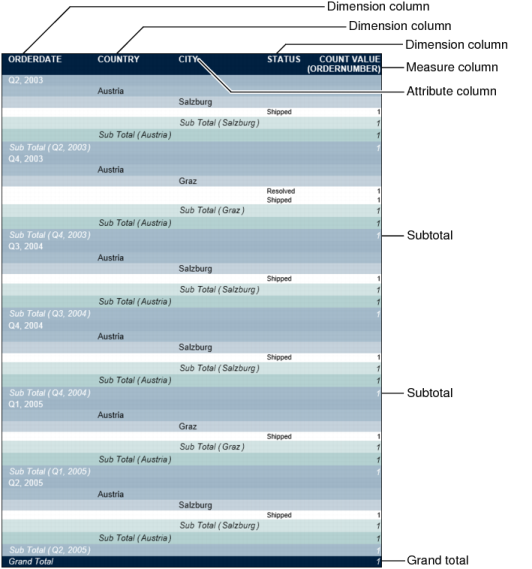The columns in a summary table are classified into dimension columns, attribute columns, and measure columns. The columns used to group data in other columns are dimension columns, and the columns whose aggregated values are evaluated are measure columns.
A dimension column groups data in other columns. Dimension columns are typically not aggregated. Some examples of dimension columns include order date, country, state, product line, and so on. A measure column is typically ungrouped, and contains aggregated data. Some examples of measure columns include number of orders, quantity ordered, profit, revenue, and so on. Sometimes a summary table can contain additional columns called attribute columns. Attribute columns are typically associated with a dimension column. For example, Product Code can be an attribute of the Product Line dimension.
Dimension columns are always displayed to the left in a report design. In the example, as shown in Figure 10-1, Order Date is a higher level or outer dimension group, and Country is another dimension group that contains the associated attribute Customer City. Dimension columns and their associated attribute columns are typically displayed side-by-side in a summary table. The example also displays a third dimension column, Order Status.
A grouped dimension column displays subtotals for the data in each group. A grouped dimension column does not display duplicate data values allowing for accurately calculated aggregate data.
|
Figure 10-1
|

